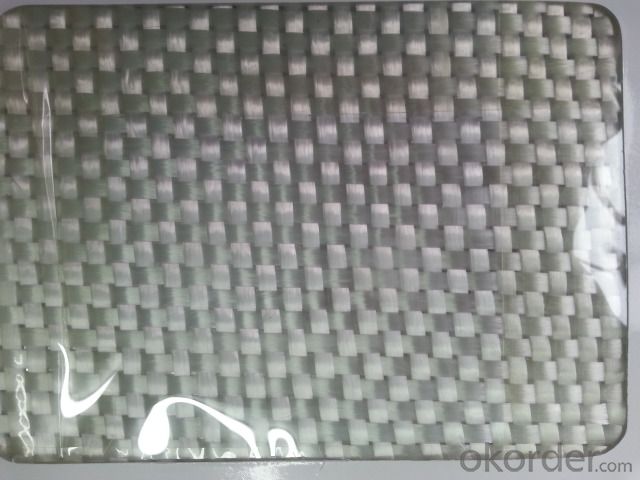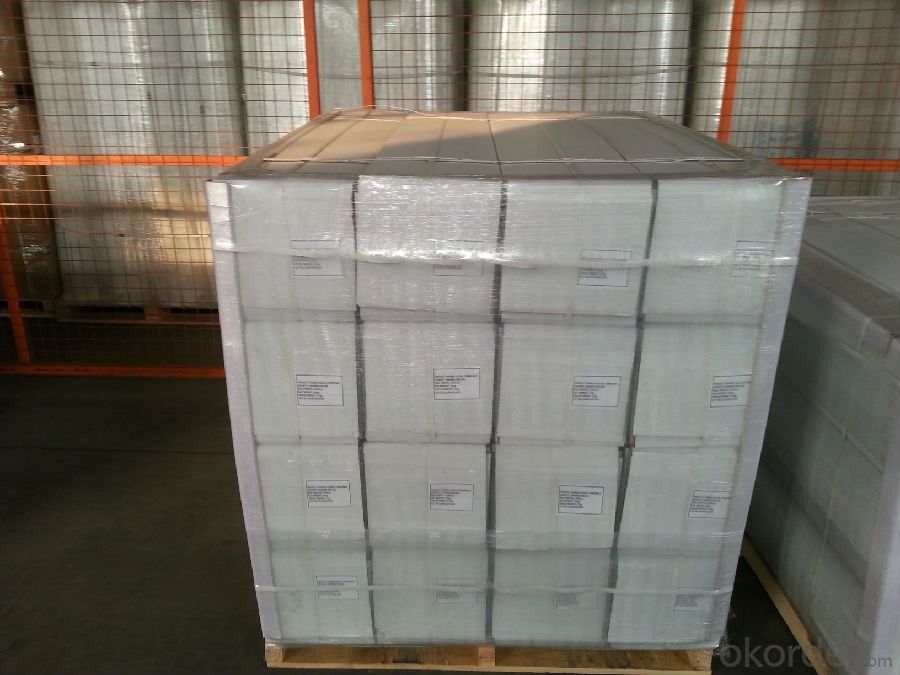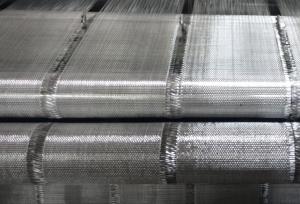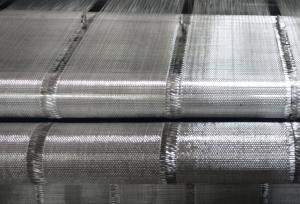GLASS FIBER WOVEN ROVING FOR BOAT PRODUCTION
- Loading Port:
- Shanghai
- Payment Terms:
- TT or LC
- Min Order Qty:
- 2000 m²
- Supply Capability:
- 50000 m²/month
OKorder Service Pledge
OKorder Financial Service
You Might Also Like
Structure of woven roving Description
1.Glass Woven Roving are bidirectional fabric made by direct roving in plain weave pattern . 2.High quality roving 3.Skilled workers to operate, to ensure the quality of fabric 4. Any width we can operate 5.Perfact packing 6.including the EWR200.EWR400,EWR570....cwr135,cwr180.cwr200.cwr500..... 7.The details as per customer requriments
Main Features of the woven roving
1. Low Fuzz,dirt,impurity and other stains.......
2. Fast wet-out.
3. Even thickness
4.Good covering
Woven roving Images:


Woven roving Specification:
Normal type | EWR800-1000 | Test Standard |
Apperance | Good | GB/T 18370-2001 |
Density(warpxweft)(end/cm) | 1.8 X 1.5 | GB/T 7689.2-2001 |
Tex (warpxweft) | 2400x2400 | ISO1889 |
Moisture content(%) | ≤0.10 | ISO3344 |
Loss on ignition(%) | 0.40-0.80 | ISO1887 |
Glass | E-glass | N/A |
FAQ of woven roving:
Woven Roving is a high –performance reinforcement widely used in hand lay-up and machanical production
1) Good moldability & drapability
2) High strength
3) Excellent rollout characteristics
4) Fast wet -out
- Q:What are the different reinforcement densities available for fiberglass mat tissue?
- The different reinforcement densities available for fiberglass mat tissue can vary depending on the specific application and manufacturer. However, commonly used densities range from 15 grams per square meter (gsm) to 1000 gsm. Lower density fiberglass mat tissue, such as those in the range of 15-50 gsm, are often used for lightweight applications where strength and durability are not the primary concerns. These lower density mats are commonly found in areas like decorative surfaces, wallpaper, and lightweight insulation. Medium density fiberglass mat tissue, ranging from 50-300 gsm, offers a balance between strength and weight. This range is frequently used in various industries including construction, automotive, and marine. The medium density mats provide good reinforcement properties while still allowing flexibility and ease of handling. Higher density fiberglass mat tissue, typically above 300 gsm, is employed in heavy-duty applications that require high strength and superior durability. These mats are commonly used in areas like roofing, flooring, and composite manufacturing. The higher density provides enhanced mechanical properties and ensures the required structural integrity. Ultimately, the choice of reinforcement density for fiberglass mat tissue depends on the specific requirements of the application, including the desired strength, weight, and overall performance characteristics. It is important to consult with manufacturers and industry experts to determine the most suitable density for a particular use case.
- Q:How does the width of fiberglass mat tissue affect its installation?
- The installation process of fiberglass mat tissue can be influenced by its width. When contemplating the width of fiberglass mat tissue, it is vital to consider the specific demands of the application or project. A broader fiberglass mat tissue can offer numerous benefits during installation. Firstly, it enables a greater coverage area, reducing the number of required overlaps and potentially saving time during installation. This can be especially advantageous in large-scale projects where efficiency is of utmost importance. Moreover, a wider width can provide better overall coverage and minimize the risk of potential gaps or weak points in the installation. This can result in a more consistent and reliable end product, ensuring improved performance and durability. However, it is important to note that a wider fiberglass mat tissue may also present certain challenges during installation. It can be more challenging to handle and maneuver, particularly when working in tight or confined spaces. This may necessitate additional caution and attention to ensure proper alignment and smooth application. Additionally, the width of fiberglass mat tissue can impact the amount of resin or adhesive required for installation. A wider width may necessitate a larger quantity of resin or adhesive, potentially leading to an increase in the overall project cost. Ultimately, the choice of fiberglass mat tissue width should be based on the specific requirements and limitations of the project. Factors such as the size of the installation area, the extent of coverage needed, and the available resources should all be taken into account to determine the most suitable width for the application.
- Q:What are the different reinforcement orientations available for fiberglass mat tissue?
- The different reinforcement orientations available for fiberglass mat tissue include random chopped strand mat (CSM), continuous strand mat (CSM), woven roving, and unidirectional fiberglass.
- Q:Is fiberglass mat tissue chemically resistant?
- Yes, fiberglass mat tissue is chemically resistant. Fiberglass mat tissue is made from fine glass fibers that are randomly oriented and bound together with a resin binder. This composition allows the material to exhibit excellent resistance to a wide range of chemicals including acids, alkalis, solvents, and oils. It is commonly used in industries such as chemical processing, petrochemicals, and wastewater treatment where exposure to various chemicals is common. The chemical resistance of fiberglass mat tissue makes it a suitable choice for applications requiring corrosion resistance and long-term durability.
- Q:What is the typical thickness of fiberglass mat tissue?
- The specific application and intended use determine the typical thickness of fiberglass mat tissue, which can vary. Usually, it is accessible in thicknesses ranging from 0.5mm to 3mm. The selection of thickness depends on factors like the desired strength, flexibility, and absorption properties necessary for the manufacturing of the specific project or product. Applications needing greater levels of strength and durability generally employ thicker fiberglass mat tissue, whereas thinner tissue is appropriate for lightweight and flexible applications.
- Q:Can fiberglass mat tissue be used for making insulation boards?
- Yes, fiberglass mat tissue can be used for making insulation boards. Fiberglass mat tissue is a lightweight, flexible material that is commonly used in the production of insulation boards. It provides excellent thermal insulation properties, as well as sound absorption and fire resistance. The mat tissue is typically layered and compressed to form the insulation boards, creating a durable and effective barrier against heat transfer. Additionally, fiberglass mat tissue is resistant to moisture, mold, and pests, making it a reliable choice for insulation applications. Overall, fiberglass mat tissue is a suitable material for making insulation boards due to its insulation performance, durability, and resistance to various environmental factors.
- Q:What are the different methods of bonding fiberglass mat tissue to other materials?
- There are several methods of bonding fiberglass mat tissue to other materials, each with its own advantages and considerations. Some of the common methods include: 1. Mechanical Bonding: This method involves physically interlocking the fiberglass mat tissue with the other material. It can be achieved through techniques such as stitching, stapling, or using mechanical fasteners like screws or nails. Mechanical bonding provides a strong and durable connection, but it may require additional hardware and can be time-consuming. 2. Adhesive Bonding: Adhesive bonding is a popular method that uses adhesives or glue to join the fiberglass mat tissue with the other material. This method offers flexibility, as there are various types of adhesives available for different applications. It is important to choose an adhesive that is compatible with both the fiberglass mat tissue and the other material. Proper surface preparation and application techniques are crucial for achieving a strong bond. 3. Resin Infusion: Resin infusion is a process where a liquid resin is infused into the fiberglass mat tissue and other materials, creating a strong bond when cured. This method is commonly used in manufacturing composite products, as it allows for a seamless and uniform bond. Vacuum bagging or resin infusion techniques are typically employed to ensure proper resin distribution and consolidation. 4. Thermal Bonding: Thermal bonding involves the use of heat to bond the fiberglass mat tissue to another material. This method is particularly suitable for thermoplastic materials, as they can be softened and fused together with heat. Techniques such as heat welding or ultrasonic welding are commonly used for thermal bonding. It is important to ensure that the heat does not damage or degrade the fiberglass mat tissue during the bonding process. 5. Fusion Bonding: Fusion bonding is a method where the fiberglass mat tissue and the other material are heated to a molten state and then brought into contact to form a bond. This technique is commonly used in the manufacturing of thermosetting plastics or joining thermoplastic materials. Fusion bonding can provide a strong and seamless bond, but it requires careful control of temperature and pressure to ensure proper bonding without causing damage. In summary, the different methods of bonding fiberglass mat tissue to other materials include mechanical bonding, adhesive bonding, resin infusion, thermal bonding, and fusion bonding. The choice of bonding method depends on factors such as the materials being bonded, the desired strength and durability, and the specific application requirements.
- Q:What is the moisture absorption rate of fiberglass mat tissue?
- The moisture absorption rate of fiberglass mat tissue is relatively low, as fiberglass is known for its water-resistant properties.
- Q:Can fiberglass mat tissue be used for insulation purposes?
- Indeed, insulation purposes can be achieved using fiberglass mat tissue. This lightweight material is crafted from delicate glass fibers that are skillfully bonded together with a binder. Although it is commonly utilized as a reinforcement material within the construction industry, it also serves as a valuable source of insulation. The thermal insulation properties of fiberglass mat tissue are truly outstanding, rendering it a highly effective option for insulating various structures, including buildings. By impeding heat transfer, it ensures that the interior of a building remains warm during chilly weather and cool during hot spells. Furthermore, its non-combustible nature guarantees a secure choice for insulation purposes. The popularity of fiberglass mat tissue as an insulation material stems from its flexibility and effortless installation. It can be easily cut and molded to fit diverse spaces, making it an adaptable choice for a multitude of construction projects. Additionally, its resistance to moisture, mold, and mildew ensures that its insulation performance remains durable and long-lasting. To summarize, fiberglass mat tissue is indeed a viable option for insulation purposes. Its remarkable thermal insulation properties, non-combustible characteristics, and ease of installation make it an ideal choice for enhancing energy efficiency and insulating buildings.
- Q:What is the delamination strength of fiberglass mat tissue?
- The delamination strength of fiberglass mat tissue refers to its ability to resist the separation or detachment of layers within the material. This strength is dependent on various factors such as the quality of the resin used, the thickness and density of the mat, and the manufacturing process. Fiberglass mat tissue is typically designed to have a high delamination strength to ensure its durability and structural integrity. The mat is composed of multiple layers of glass fibers held together by a binder or resin. The bonding between these layers is crucial in preventing delamination. The delamination strength of fiberglass mat tissue can be determined through various testing methods, such as the peel test, where the force required to separate the layers is measured. This test provides valuable information about the adhesive strength between the layers and helps in assessing the overall quality of the material. The delamination strength can vary depending on the specific application and requirements. For example, fiberglass mat tissue used in construction or automotive industries may have different delamination strength specifications compared to those used in marine or aerospace applications. Manufacturers typically provide technical data or specifications indicating the delamination strength of their fiberglass mat tissue products. It is important to note that the delamination strength of fiberglass mat tissue can be influenced by external factors such as exposure to extreme temperatures, moisture, or chemical substances. Therefore, proper installation, maintenance, and adherence to recommended usage guidelines are essential to maintaining the desired delamination strength and overall performance of the material.
1. Manufacturer Overview |
|
|---|---|
| Location | |
| Year Established | |
| Annual Output Value | |
| Main Markets | |
| Company Certifications | |
2. Manufacturer Certificates |
|
|---|---|
| a) Certification Name | |
| Range | |
| Reference | |
| Validity Period | |
3. Manufacturer Capability |
|
|---|---|
| a)Trade Capacity | |
| Nearest Port | |
| Export Percentage | |
| No.of Employees in Trade Department | |
| Language Spoken: | |
| b)Factory Information | |
| Factory Size: | |
| No. of Production Lines | |
| Contract Manufacturing | |
| Product Price Range | |
Send your message to us
GLASS FIBER WOVEN ROVING FOR BOAT PRODUCTION
- Loading Port:
- Shanghai
- Payment Terms:
- TT or LC
- Min Order Qty:
- 2000 m²
- Supply Capability:
- 50000 m²/month
OKorder Service Pledge
OKorder Financial Service
Similar products
New products
Hot products
Hot Searches
Related keywords





























